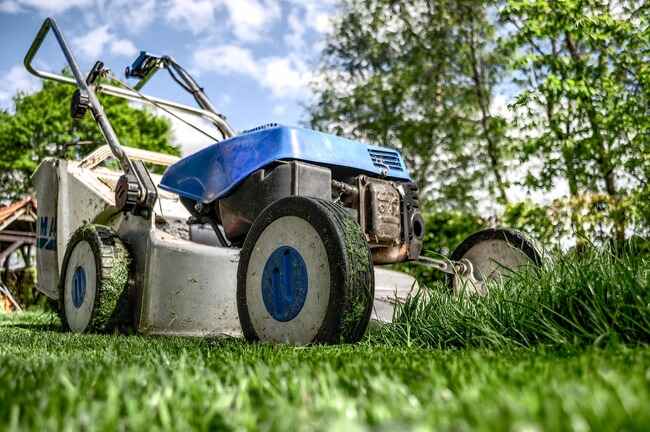Maintaining a healthy and lush lawn is more than just a matter of aesthetics; it reflects the overall health of your outdoor environment and enhances the value of your property. Scheduled lawn maintenance plays a pivotal role in achieving and preserving that beautiful, green space. This blog will explore why having a regular lawn care schedule is essential, the benefits it provides, and how it contributes to the long-term health and beauty of your lawn.
Understanding Scheduled Lawn Maintenance
Scheduled lawn maintenance involves a planned approach to caring for your lawn at regular intervals throughout the year. Unlike reactive care, which addresses problems as they arise, scheduled maintenance takes a proactive stance. It includes a variety of services such as mowing, fertilization, weed control, aeration, and more, performed at specific times based on the season and the needs of your lawn.
The Benefits of Scheduled Lawn Maintenance
- Consistency in Lawn Health: Regular lawn care ensures that your grass receives consistent attention, leading to better overall health. Consistency in mowing, watering, and fertilizing helps maintain even growth and prevents issues like uneven patches or bald spots. For example, consistent mowing at the right height can prevent stress on the grass and promote dense, healthy growth.
- Weed and Pest Control: One of the primary benefits of scheduled lawn maintenance is the control of weeds and pests. Weeds can quickly overtake a lawn if not managed regularly, competing with grass for nutrients and water. Scheduled treatments help prevent weed infestations before they become a problem. Similarly, regular inspections and treatments can identify and address pest issues early, reducing the likelihood of significant damage.
- Optimal Fertilization: Fertilization is crucial for providing the nutrients your lawn needs to thrive. Scheduled lawn care ensures that your lawn receives the right type and amount of fertilizer at the appropriate times. This prevents over-fertilization, which can lead to problems such as excessive growth and thatch build-up, and under-fertilization, which can result in weak, discolored grass.
- Improved Soil Health: Regular maintenance often includes practices like aeration and dethatching, which improve soil health. Aeration involves perforating the soil with holes to allow air, water, and nutrients to penetrate the root zone more effectively. Dethatching removes the layer of organic matter that can build up on the soil surface, which can otherwise inhibit water and nutrient absorption. These practices, when scheduled appropriately, contribute to a healthier root system and overall lawn vitality.
- Seasonal Adaptation: Different seasons bring different challenges for lawn care. Scheduled maintenance allows for adjustments in care routines to match seasonal needs. For instance, during the spring, a focus on fertilization and pre-emergent weed control might be necessary, while summer maintenance might emphasize watering and pest control. In fall, preparing the lawn for winter with proper mowing and fertilization helps ensure it is ready to thrive when warmer weather returns.
- Time and Cost Efficiency: Having a set schedule for lawn maintenance helps manage time and costs effectively. With a planned approach, you can avoid last-minute scrambles to address lawn issues, which can be more time-consuming and costly. Regular care helps prevent major problems that might require expensive treatments or replacements.
- Enhanced Curb Appeal: A well-maintained lawn significantly enhances your property’s curb appeal. Regular mowing, edging, and upkeep ensure that your lawn remains visually appealing throughout the year. This is particularly important if you plan to sell your property or simply want to enjoy a beautiful outdoor space.
- Environmental Benefits: A healthy lawn contributes positively to the environment. Regular maintenance practices such as mowing and fertilization help promote strong grass growth, which can reduce soil erosion, improve air quality, and support local wildlife. Proper lawn care also ensures that your lawn acts as a carbon sink, capturing and storing carbon dioxide from the atmosphere.
Creating a Scheduled Lawn Maintenance Plan
To maximize the benefits of scheduled lawn maintenance, consider the following steps:
- Assess Your Lawn’s Needs: Start by evaluating your lawn’s current condition and specific needs. Consider factors such as grass type, soil quality, and common issues like weed or pest problems. Understanding your lawn’s unique requirements will help tailor a maintenance plan that addresses its specific needs.
- Develop a Maintenance Calendar: Create a calendar that outlines the various tasks to be performed throughout the year. Include mowing schedules, fertilization dates, aeration and dethatching periods, and weed and pest control treatments. Align these tasks with seasonal changes to ensure they are performed at the most effective times.
- Monitor and Adjust: Regularly monitor your lawn’s condition and the effectiveness of your maintenance plan. Be prepared to adjust your schedule based on changes in weather, grass growth, and other factors. For example, if a particularly wet season leads to faster grass growth, you may need to increase mowing frequency.
- Consult with Professionals: If you are unsure about how to develop a maintenance plan or handle specific lawn care tasks, consider consulting with lawn care professionals. They can provide expert advice and services to help you achieve the best results for your lawn.
Scheduled lawn maintenance is essential for achieving and maintaining a healthy, vibrant lawn. By ensuring consistent care and addressing seasonal needs, you can enhance your lawn’s health, prevent problems, and enjoy a beautiful outdoor space year-round. Embracing a proactive approach to lawn care not only improves the appearance of your property but also contributes to its overall value and environmental impact. With a well-planned maintenance schedule, your lawn can thrive and provide lasting enjoyment for you and your family.

